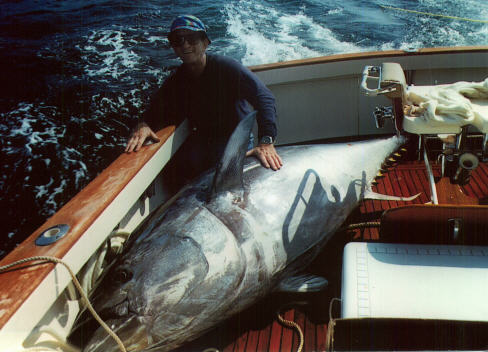By Jonathan Amos Science reporter, BBC News, San Francisco |
Scientists have witnessed the extreme lifestyle of tonguefish that like to skip across pools of molten sulphur. ![]()
![]()
The animals - a type of flatfish - were filmed on three expeditions to undersea volcanoes in the western Pacific.
Huge numbers were seen to congregate around the sulphur ponds which well up from beneath the seafloor.
Researchers from the University of Victoria, Canada, are trying to work out how the creatures survive in such a hostile environment.
"There are a lot of toxic heavy metals coming out of these active volcanoes," explained Dr John Dower, a fisheries oceanographer.
"The water is very warm, and it can be very acidic, the pH can be as low as two like sulphuric acid," he told BBC News. ![]()
![]() As a visual spectacle, it's like something from another planet
As a visual spectacle, it's like something from another planet ![]()
"And yet here we've got a group that has not previously been seen in this type of environment and they're doing very well - they're actually thriving."
The fish have been studied with remotely operated submersibles, including the Jason II vehicle this year.
Noaa's arc
The area of interest is the Mariana Arc, a 1,200km chain of volcanic seamounts and islands between Guam and Japan.
It hosts a number of hydrothermal vents - rock systems that draw water through cracks in the seafloor, heat it to temperatures which can be well above 100C, load it with dissolved metals and other chemicals, and then eject the hot fluid back into the ocean. 
This type of habitat will support a range of specialised animals such as crabs, shrimp, mussels, and worms - but very few fish. And the flatfish seen on the Mariana Arc seamounts are a first.
"The density of these things is remarkable; we've determined that the abundances are actually about two orders of magnitude (100x) higher than what one typically finds on the continental shelf," said Dr Dower.
"So, these may be the highest flatfish densities seen anywhere, and it raises the puzzling question: what's supporting all that biomass?"
The team thinks the flatfish may be living on resources in the sediments, possibly worms or even bacteria. On one voyage to the vents, the tonguefish were seen to rip apart a dead fish that had fallen out of the water column above - so they may not be too choosy about where their meals come from.
Sulphur skippers
What is certainly astonishing is their behaviour around the sulphur pools. The molten material that wells up from beneath the seafloor is denser than the surrounding water and simply lies in ponds in the depressions through which it emerges. 
The measured temperature is more than 180C (355F).
"These flatfish live right up against the edge of the pools, and in a couple of cases we saw them out on the surface of a pool," said Dr Dower.
"We have video of a fish sitting on the molten sulphur and then moving off after a couple of minutes, apparently unharmed. They seem to be able to tolerate an environment that no other flatfish, and very few fish in general, are found in."
The deep-sea submersibles captured some of the fish and they are now being analysed.
They have been assigned to the taxonomic genus of Symphurus but they are a species new to science. The team intends to describe their behaviour and ecology in detail in a forthcoming journal paper.
Independent scientists who have seen the video of the tonguefish confess to being amazed. ![]()

Dr Alex Rogers is a senior research fellow at the Zoological Society of London (ZSL), and recently co-authored a report on the state of seamounts for the United Nations.
"This is stunning," he told BBC News. "The temperatures which these fish are experiencing means they must have remarkable stress defence mechanisms to be able to survive in that environment.
"So physiologically it's remarkable; but as a visual spectacle, it's like something from another planet."
Dr Dower has been talking about the fish here at the American Geophysical Union Fall Meeting.
You can see video of the flatfish by clicking on the Noaa web link.



















